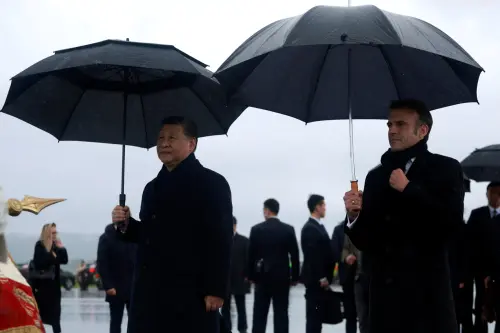For years, Americans and Japanese have discussed what their alliance should do in the post-Cold War era. With its response to the DPRK’s May 25 nuclear test, I believe the U.S.-Japan alliance is fulfilling its most important strategic function: to serve as a mechanism to bring about cooperation with China.
The United States and Japan have benefitted from China’s economic growth and its contributions on issues like North Korea. But Tokyo and Washington are also concerned about Beijing’s political and military clout, to the extent that a minority of Americans and Japanese favor containment of China. Although I disagree with such a policy, because it would ensure China’s hostility, focusing on China’s rise is proper. A rising power poses a challenge to the prevailing international system and to the states that guard that system, because the new power’s intentions are usually unclear.
How the United States and Japan interact with China in the future will shape the future strategic map of Northeast Asia. There are two ways that this interaction could produce a vicious circle of mutual mistrust. The first is an arms or capabilities race: China’s builds its military power because the United States and Japan strengthen their alliance, and vice versa. Dangerously, each side takes action based on its fears of the other.
Second, a vicious circle can result as China interacts with the U.S. and Japan on specific issues where they believe their fundamental interests are at stake. On matters like Taiwan, North Korea, and the East China Sea, each side may draw negative conclusions about the long-term intensions of the other and act accordingly.
This creates the potential for a tragedy, in spite of the many ways in which the three countries cooperate. That is, even though United States and Japan may be prepared to accommodate a rising China into the international system, China’s actions require them to resist or oppose China. Conversely, even though China may be willing to accommodate to the international system, American and Japanese actions lead it to challenge the existing order.
The Chinese have saying: two tigers can’t lie on the same mountain. The challenge is for all three countries to create a situation where tigers can lie on the same mountain, a situation in which China, Japan, and the United States can cooperate and coexist and avoid the tragedy of a competition for power. The U.S.-Japan alliance should management of the rise of China as a strategic task.
What can the United States and Japan do to avoid vicious circles and create a positive environment? Seven things come to mind.
- Washington and Tokyo need a clear, shared understanding of the nature of China’s rise, an assessment that is neither naïve nor alarmist, and a shared vision of a positive Chinese role in the international system.
- They should challenge Chinese negative interpretations of their intentions, because it is Beijing’s perceptions that create the basis for its actions.
- They should find and exploit opportunities for positive engagement: bilaterally, regionally, and globally.
- Where possible, they should try hard to solve the specific problems that lead each side to draw negative conclusions about the other. If the issues can’t be solved, the three countries need to manage the issues well and develop mechanisms to regulate their interaction.
- Japanese and American leaders need to educate their publics on what China is and is not.
- They should ensure that the United States and Japan individually and together have the capacity to carry out this strategic task.
- The U.S. and Japan should join Beijing to create a trilateral Track 1 dialogue mechanism, and create better dialogue channels with the Chinese military, because that part of the Chinese system that is most suspicious about American and Japanese intentions.
Obviously, Washington and Tokyo cannot be the only ones that act to ensure that a good outcome accompanies. China must do its part: in having accurate perceptions of U.S. and Japanese actions; in crafting responses; and in fostering favorable public opinion. Yet for the United States and Japan, addressing the rise of China is today’s strategic challenge, because it will define tomorrow’s strategic landscape. Doing it well is the strategic task of their alliance, and they must have the capacity, the will, and the skill to get it right.



Commentary
Op-edChina and the U.S.-Japan Alliance
June 6, 2009